The Color of Pomegranates
8 /10 1 Votes
Duration | 7.8/10 IMDb Country Soviet Union | |||||||||||||||||||||||||||||||||
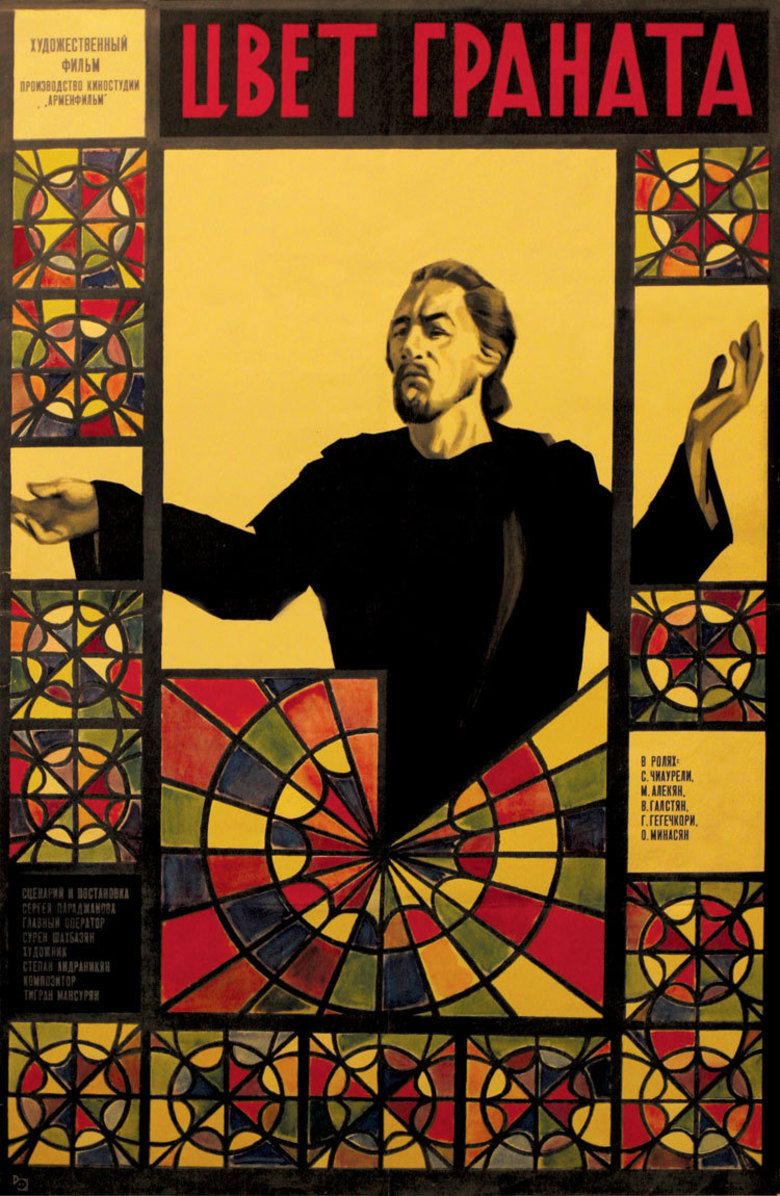 | ||||||||||||||||||||||||||||||||||
Release date 1969 (1969) | ||||||||||||||||||||||||||||||||||
The Color of Pomegranates (Armenian: Նռան գույնը) is a 1969 Soviet film written and directed by Sergei Parajanov. It has appeared in some scholarly polls of the greatest films ever made.
Contents
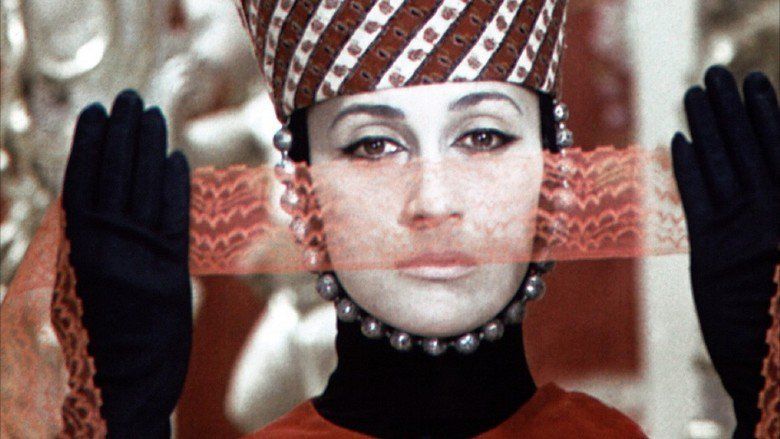
Overview
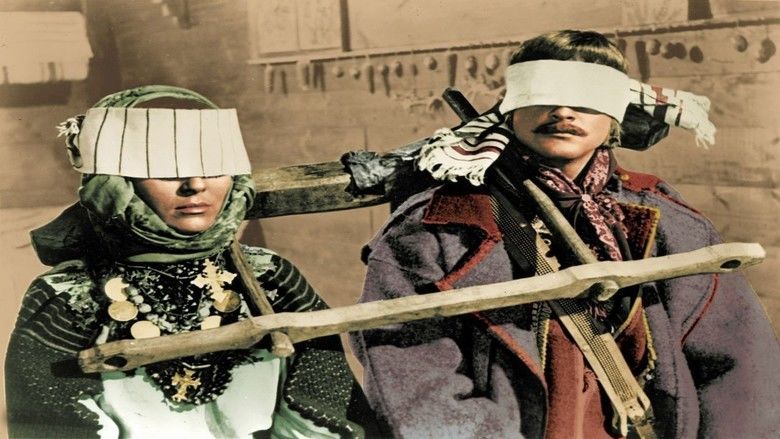
The Color of Pomegranates is a biography of the Armenian ashug Sayat-Nova (King of Song) that attempts to reveal the poet's life visually and poetically rather than literally. The film is presented in a form of silent movie with active tableaux which depict the poet's life in chapters: Childhood, Youth, Prince's Court (where he falls in love with a tsarina), The Monastery, The Dream, Old Age, The Angel of Death and Death. There are sounds and music and occasional singing but dialogue is rare. Each chapter is indicated by a title card and framed through both Sergei Parajanov's imagination and Sayat Nova's poems. Actress Sofiko Chiaureli notably plays six roles in the film, both male and female. According to Frank Williams, Paradjanov's film celebrates the survival of Armenian culture in the teeth of oppression and persecution: "There are specific images that are highly charged — blood-red juice spilling from a cut pomegranate into a cloth and forming a stain in the shape of the boundaries of the ancient Kingdom of Armenia; dyers lifting hanks of wool out of vats in the colours of the national flag, and so on".
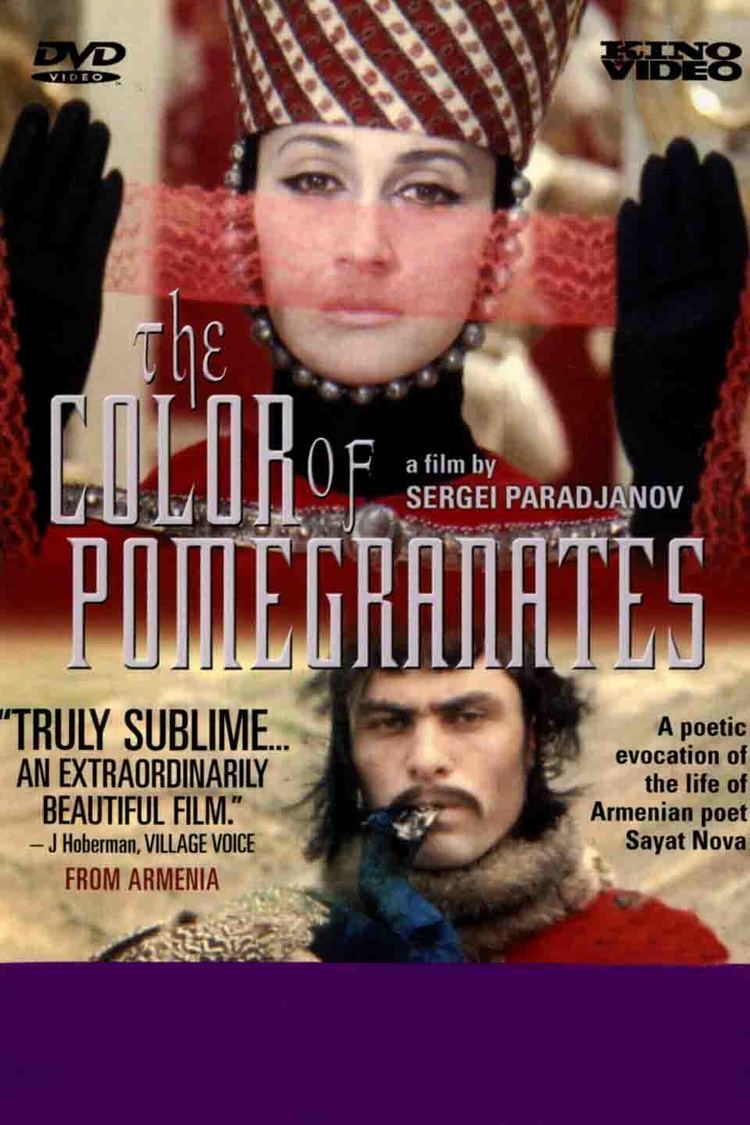
The director had claimed his inspiration was "the Armenian illuminated miniatures. I wanted to create that inner dynamic that comes from inside the picture, the forms and the dramaturgy of colour." Parajanov once made a speech in Minsk in which he asserted that the Armenian public very likely did not understand The Color of Pomegranates, but then said that people "are going to this picture as to a holiday".

Some Russian versions of The Colour of Pomegranates have Special Edition features. The Memories of Sayat Nova', by Levon Grigoryan, is a 30 mins synopsis that explains what is happening in the tableaux and in each chapter of the poet's life. G. Smalley asserts that every carefully composed image in The Colour of Pomegranates is coded to a meaning, but the key to interpreting them is missing. He agrees with Parajanov that "If someone sat down to watch The Color of Pomegranates with no background, they would have no idea what they were seeing"; for this reason the Memories feature is invaluable.
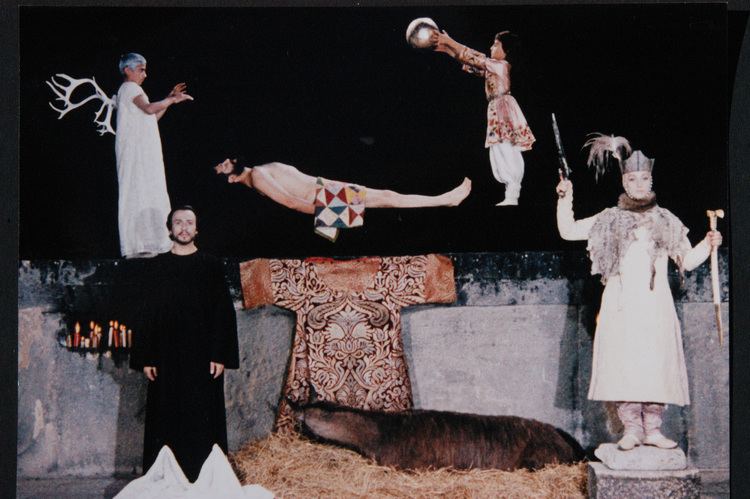
The making of the film and its different versions are explored in the other special features: Introduction by writer and filmmaker Daniel Bird; 'The World Is A Window: Making The Colour of Pomegranates' - a new documentary by Daniel Bird; Commentary by Levon Abrahamyan moderated by Daniel Bird.
Cast
Locations
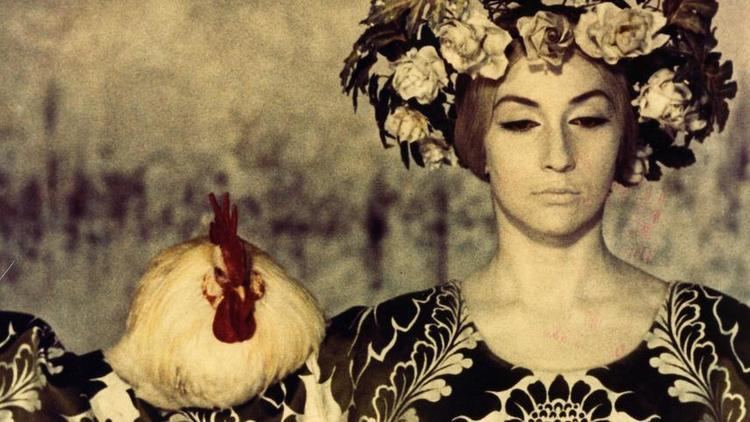
The film was shot at numerous historic sites in Armenia, including the Sanahin Monastery, the Haghpat Monastery, the St.John church at Ardvi, and the Akhtala Monastery. Locations in Georgia included the Alaverdi Monastery, the countryside surrounding the David Gareja monastery complex, and the Dzveli Shuamta complex near Telavi. Azerbaijani locations included the Old City (Baku) and Nardaran Fortress.
Censorship and release

Soviet censors and Communist Party officials objected to Parajanov's stylized, poetic treatment of Sayat-Nova's life and complained that it failed to educate the public about the poet. As a result, the film's title was changed from Sayat-Nova to The Color of Pomegranates, and all references to Sayat-Nova's name were removed from the credits and chapter titles in the original Armenian release version. The noted Armenian writer Hrant Matevosyan wrote new, abstractly poetic Armenian-language chapter titles. Officials further objected to the film's abundance of religious imagery, although a great deal of religious imagery still remains in both surviving versions of the film. Initially the State Committee for Cinematography in Moscow refused to allow distribution of the film outside of Armenia. It premiered in Armenia in October 1969, with a running time of 77 minutes.
The filmmaker Sergei Yutkevich, who had served as a reader for the script in the State Committee for Cinematography's Script Editorial board, recut the film slightly and created new Russian-language chapter titles in order to make the film easier to understand and more palatable to the authorities. In addition to cutting a few minutes worth of footage—some of it clearly due to its religious content—he changed the order of some sequences. The film ultimately received only a limited release in the rest of the Soviet Union, in Yutkevich's 73 minute version.
In 2014 the film was digitally restored and re-edited to be as close as possible to the director’s original vision. The restoration was completed in conjunction with Cineteca di Bologna, and was, described by critic and Toronto festival programmer James Quandt as “a cinematic Holy Grail”
A bluray is planned to be released in the UK on 20th November 2017.
Critical reception
In 1980, Janet Maslin of The New York Times wrote that "the film is elusive in any circumstances. However, anything this purely mysterious has its magic." The Color of Pomegranates made the Top 10 list for 1982 in Cahiers du cinéma. Filmmaker Mikhail Vartanov has said: "besides the film language suggested by Griffith and Eisenstein, the world cinema has not discovered anything revolutionarily new until The Color of Pomegranates, not counting the generally unaccepted language of the Andalusian Dog by Buñuel". According to Michelangelo Antonioni, "Parajanov's Color of Pomegranates is of a stunningly perfect beauty. Parajanov, in my opinion, is one of the best film directors in the world."
Legacy
Film critic Gilbert Adair argued that "although in both style and content it gives us the impression, somehow, of predating the invention of the cinema, no historian of the medium who ignores The Color of Pomegranates can ever be taken seriously". The work ranked 84th in the 2012 Sight & Sound critics' poll of the world's greatest films and appeared in another list of the greatest films by Time Out. The film holds a 91% rating on Rotten Tomatoes.
The Color of Pomegranates was referenced in the films Peter Greenaway in Indianapolis (1997) and Erased Faces II (2006).
Clips from the movie are also used in the music video for the song "Love Is A Silent Thief" by the Georgian-born singer Katie Melua. In addition, scenes from the movie are used in the music video for the Juno Reactor song "God is God".
In 2015, New York-based composer Nicolas Jaar released a largely ambient record entitled Pomegranates, which he intended as an alternative soundtrack to The Color of Pomegranates.
Stoner Metal band Seven Sisters of Sleep used clips from the film for their music video for War Master. The band Kiosk also used clips in the music video for their cover of Ay yorum biyo.
References
The Color of Pomegranates WikipediaThe Color of Pomegranates IMDb The Color of Pomegranates themoviedb.org
